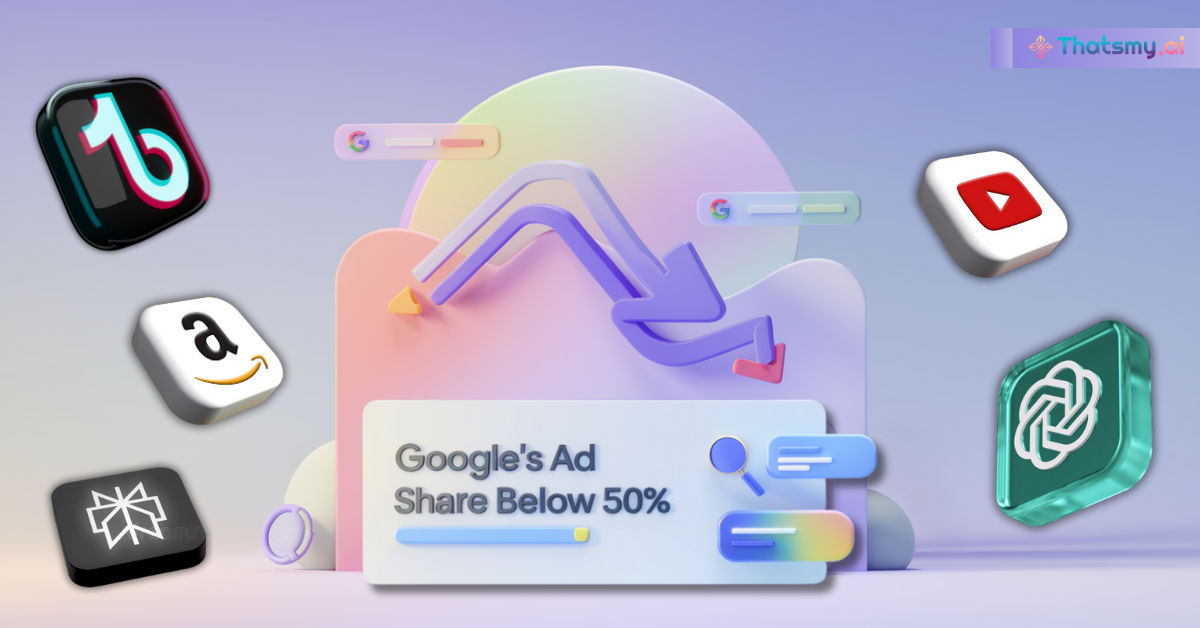Google's dominance in search advertising is declining, with projections indicating a drop below 50% by 2025. Rising competitors like Amazon, TikTok, and AI-powered platforms such as Perplexity AI are capturing market share by offering targeted advertising opportunities and adapting to changing consumer behaviors, particularly among Gen Z. Amazon’s data-driven ads, TikTok’s video engagement, and AI's innovation are reshaping the digital ad landscape, pushing Google to adapt by enhancing its AI capabilities and diversifying ad formats. Advertisers now need a multi-channel strategy to stay effective.

Google has always been the biggest player in the search advertising market, but recent projections show that its stronghold is starting to weaken. Honestly, it's surprising to see how much things are changing. Analysts are now suggesting that Google’s market share might drop below 50% for the first time in over a decade.
This is a major shift in the digital ad world! The decline is happening because of the rise of alternative platforms, shifting consumer habits, and competition from big names like Amazon, TikTok, and new AI-powered search engines. Let’s break this down and see what's really happening.
The U.S. search advertising market, which is valued at around $300 billion, has been dominated by Google for many years. But now, Google’s share is shrinking:
2018: Google held roughly 60% of the search ad market.
Current Share: Google now holds about 50.5%.
Future Projection: Google's share could drop to around 48.3% by 2025.
It’s quite interesting that Google’s decline is encouraging advertisers to spread their budget across different platforms, something we never would have imagined a few years back.
Market Share: Amazon is expected to capture 22.3% of the search ad market by 2024, with a growth rate of 17.6%.
Consumer Behavior: More and more people are starting their product searches directly on Amazon, trusting the platform for honest reviews and recommendations.
Impact on Google: This is slowly eating away at Google’s dominance, especially in product-related searches.
Targeting Ads: TikTok lets brands target ads based on user searches, which puts it directly in competition with Google. For example, TikTok's algorithm can deliver ads to users based on the types of videos they watch and engage with.
Younger Demographics: TikTok is extremely popular with Gen Z, and its short, engaging video content makes it super appealing.
Advertiser Attraction: Many advertisers now prefer TikTok to reach audiences that are drifting away from traditional search engines. Personally, I think TikTok’s creative, video-based ads are an exciting new way for brands to connect with young audiences.
In addition to Amazon and TikTok, AI-powered search engines are gaining some serious traction. Perplexity AI, for instance, has already captured about 4% of the market since its launch. They plan to introduce ads alongside their AI-generated answers, giving advertisers a new way to reach users. It’s fascinating to see how these newer engines are combining helpful, conversational answers with ads, creating a completely different experience compared to Google.
One of the biggest reasons for Google’s decline is changing consumer behavior, especially among younger generations. Platforms like TikTok and Amazon are becoming the go-to sources for product searches. Gen Z, for instance, doesn’t use Google as much as older generations. Instead, they prefer more direct and social-driven searches. It’s almost shocking that young users aren’t even using "Google" as a verb anymore!
Google has tried to keep up by adding AI features to its search engine. Now, you can see ads alongside AI-generated summaries. For example, if someone asks how to remove grass stains from jeans, Google displays relevant ads with an AI-generated answer. This is a smart move, but it feels like a reactive one rather than leading innovation. Plus, privacy changes like Apple’s iOS 18 update have made things harder for companies like Google, which relied heavily on tracking to target ads effectively.
The changing search ad landscape is both a challenge and an opportunity for advertisers. On the one hand, they have more options and could see lower costs because of increased competition. On the other hand, they need to be quick to adapt. A multi-channel approach is more important than ever. While Google still offers massive reach, platforms like Amazon, TikTok, and Perplexity AI give more precise targeting that could work better for certain audiences or products.
The potential decline in Google's search ad market share is a big moment in digital advertising. Platforms like Amazon, TikTok, and emerging AI tools are changing how brands connect with audiences. For Google, it's a clear signal that they need to innovate more aggressively to keep up. For advertisers, the key takeaway is clear: diversify. Try out multiple channels while still making use of Google’s strengths. As the digital ad world evolves, being flexible and ready to change is the most valuable quality for brands wanting to stay connected to their customers.
Sign up to gain AI-driven insights and tools that set you apart from the crowd. Become the leader you’re meant to be.
Start My AI Journey
ThatsMyAI
20 March 2025

ThatsMyAI
7 March 2025